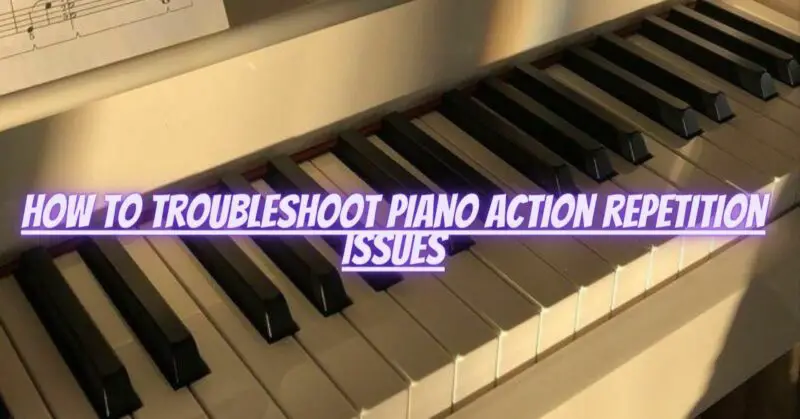Experiencing repetition issues with a piano action can be frustrating for pianists as it affects the playability and responsiveness of the instrument. Repetition issues may manifest as sluggish or sticking keys, preventing the piano from producing rapid and repeated notes accurately. Here’s a step-by-step guide on how to troubleshoot piano action repetition issues:
1. Identify the Affected Keys: Play each key on the piano and note which keys are experiencing repetition problems. Check for keys that don’t return to their resting position quickly after being released.
2. Inspect the Action Components: Open the piano and examine the action components, including hammers, repetition levers, and back checks. Look for any visible signs of damage, wear, or misalignment.
3. Check for Obstructions: Look for any foreign objects or debris that might be obstructing the movement of the action components. Even small particles can cause repetition issues.
4. Clean the Action: Use a soft brush or compressed air to remove dust and dirt from the action. Clean each component carefully to ensure smooth movement.
5. Lubrication: Apply a small amount of appropriate lubricant (graphite or Teflon-based lubricants) to the moving parts of the action, such as repetition levers and knuckles. Avoid using oil-based lubricants as they can attract dust and cause more problems.
6. Hammer Alignment: Check if the hammers are correctly aligned with the strings. Misaligned hammers can cause inefficient energy transfer and affect repetition. Align them properly if needed.
7. Back Check Adjustment: Ensure that the back checks engage and release properly. They should engage just before the hammer reaches the strings and release quickly afterward. Adjust their height if necessary.
8. Regulation Adjustment: Check the piano’s regulation settings, especially the repetition lever regulation. If the repetition levers are too close to the strings, it can cause double striking or sluggishness. Adjust the regulation if needed.
9. Voicing (Optional): If certain hammers produce uneven or harsh sounds, voicing them might help achieve a more balanced tone. Voicing involves shaping the hammers’ felt to improve their tonal characteristics.
10. Seek Professional Help: If the above steps do not resolve the repetition issues, or if you are not familiar with piano mechanics, it’s best to seek the assistance of a qualified piano technician. A professional can diagnose the problem accurately and perform more advanced adjustments or repairs.
11. Regular Maintenance: Regularly maintain your piano by having it tuned and serviced by a qualified technician. Regular maintenance can help prevent repetition issues and ensure the piano performs optimally.
Remember that piano action troubleshooting requires precision and expertise. If you are unsure about performing any adjustments or repairs, it’s best to leave the work to a qualified piano technician to ensure the longevity and proper functioning of your instrument.

